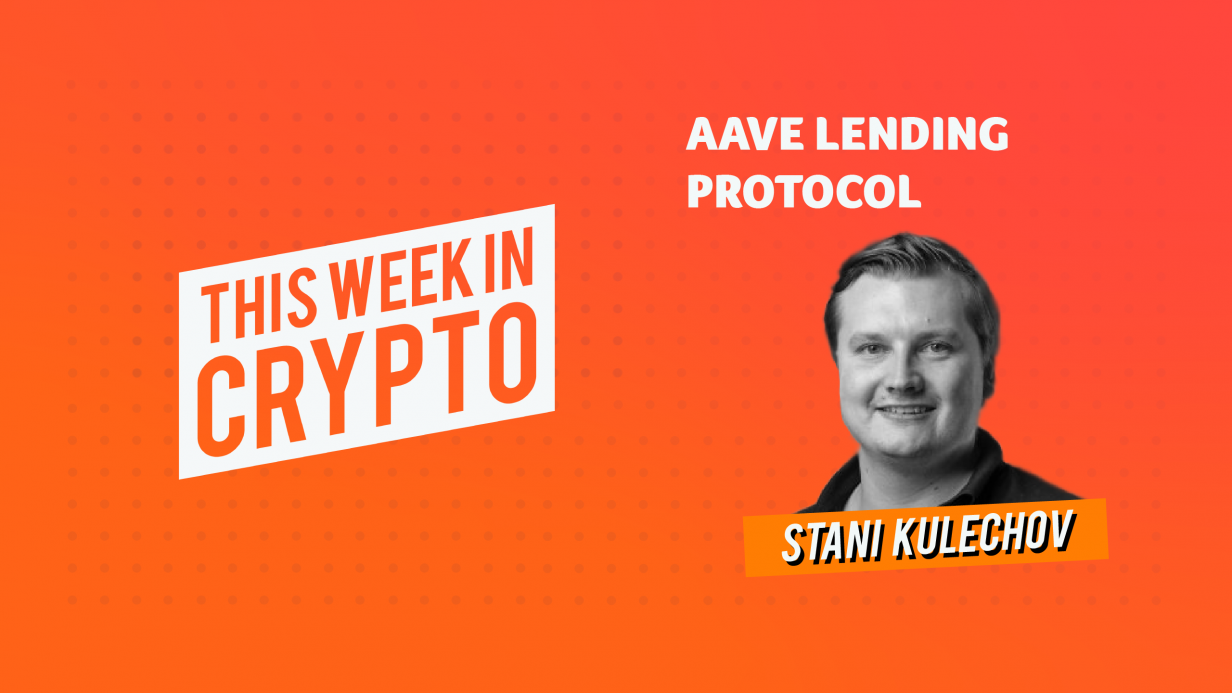
Aave Flash Loans And Lending Protocol
Aave is an open-source and non-custodial protocol to earn interest on deposits and borrow assets with a variable or stable interest rate. According to DeFi Pulse, Aave holds $16 million in total locked value. Founder Stani Kulechov joins us to discuss flash loans, stable interest, and protocol composability.
Aave Lending
In 2017, Aave launched ETHLend, a peer-to-peer order matching lending platform. In January of this year, the Aave platform went live, allowing lenders to earn interest on 15+ listed ethereum tokens.
aTokens represent underlying assets under management on Aave. When a lender deposits funds, they receive an equivalent amount of aTokens. Interest is also paid in aTokens directly to the lender’s address and in real-time. Once a lender withdraws their funds, aTokens are converted back to the underlying asset. aTokens make it easier to asses the amount of interest earned by holding a stable value.
Aave Borrowing
Aave users can borrow crypto-backed loans. Aave also offers a stable interest rate and allows borrowers to swap their rates between variable or stable on a per-block basis. A stable rate reduces the risk of liquidation by locking borrowers into a predefined rate. Only two conditions can change the stable rate including when (1) the borrowing rate is lower than the deposit rate and (2) the new stable rate is cheaper than the current stable rate.
A loan-to-value (LTV) ratio is the percentage of funds that can be borrowed against collateral. Ethereum currently has an LTV of 80%. If ethereum is worth $100, users can borrow up to 80 DAI for every 1 ETH. The most important factors in determining the LTV are liquidity and volatility. Listed tokens must have enough volume to liquidate. Volatile tokens are at higher risk of liquidation. Aave recently dropped the LTV of MKR due to fear of a governance attack on flash loans.
Flash Loans
The current state of DeFi has been driven by total locked value, a benchmark for assets under management. However, it’s not efficient to store assets on smart contracts. In an attempt to reuse staked collateral and provide additional products for borrowers, Aave introduced flash loans. With flash loans, borrowers can take advantage of 100% undercollateralized loans with interest rates as low as 0.09% per flash. The only caveat is that flash loans must be returned by the next ethereum block, which is roughly 13 seconds. If it’s determined that a flash loan won’t be returned by the next block, the loan will be reverted.However, borrowers can make multiple transactions within a single block. The recent bZx exploit showed what’s possible with flash loans. Kulechov explained that even more is possible, including:
- Arbitrage – borrowers can execute market arbitrage across multiple exchanges.
- Collateral Swap – borrowers can swap the underlying collateral on their Maker CDP.
- Refinancing – borrowers can close out a high-interest loan on one protocol and open a lower interest loan on another protocol.
Flash loans provide diversified income streams for depositors and attract more yield to other protocols. Developers can use Aave’s simple APIs and open-source code to implement flash loans into their applications.


